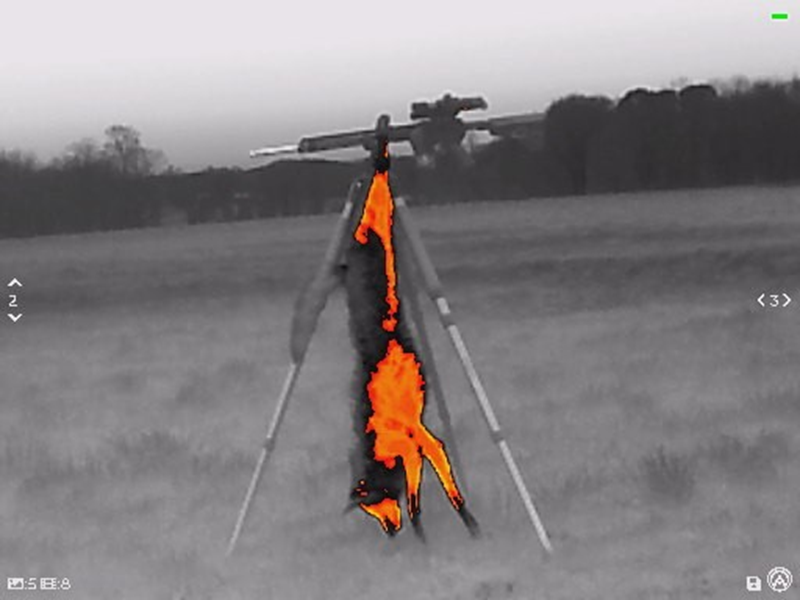Exploring Common Questions About Thermal Imaging
Jul 17th 2024
Thermal imaging technology has a wide range of applications, from search and rescue operations to building inspections and medical diagnostics. At Armasight, we often receive numerous questions about how thermal imaging works and its various uses. In this blog, we'll address some of the most frequently asked questions about thermal imaging in detail.
How Does Thermal Imaging Work?
Thermal imaging detects infrared radiation (heat) emitted by objects and converts it into an image. Here's a closer look at the process:
- Infrared Radiation: All objects emit infrared radiation based on their temperature. The hotter an object, the more infrared radiation it emits.
- Thermal Sensor: A thermal imaging device uses a thermal sensor to detect this infrared radiation. The sensor measures the temperature differences and creates a detailed image based on these variations.
- Display: The detected heat signatures are then processed and displayed as an image on the device's screen. Different temperatures are often represented by different colors or shades, providing a clear visual representation of heat patterns.
Key Features of Thermal Imaging
- Temperature Detection: Detects temperature differences with high sensitivity.
- All-Weather Capability: Functions effectively in complete darkness, through smoke, fog, and light foliage.
- Non-Contact: Measures temperature from a distance, useful for monitoring and inspections without physical contact.

Figure 1: Scene through Armasight Sidekick thermal monocular
What are the Uses of Thermal Imaging?
Thermal imaging has diverse applications across various fields:
- Search and Rescue: Used to locate individuals in darkness, dense fog, or smoke by detecting body heat.
- Example: During a nighttime search and rescue mission in dense fog, thermal imaging helped locate a missing hiker by detecting their body heat, significantly speeding up the rescue process.
- Wildlife Observation: Tracks and monitors animals without disturbing them, especially useful for nocturnal species.
- Security and Surveillance: Enhances visibility in low-light conditions, used for perimeter security and law enforcement operations.
Can Thermal Imaging See Through Walls?
No, thermal imaging cannot see through walls. However, it can detect heat signatures on the surface of walls, which may indicate the presence of something behind the wall, such as:
- Insulation Gaps: Variations in temperature can reveal areas where insulation is missing or compromised.
- Water Leaks: Moisture trapped behind walls can alter temperature patterns, making it detectable.
- Electrical Issues: Overheating wires and circuits behind walls can be identified by their heat signatures.
What is the Best Thermal Imaging Camera?
The best thermal imaging camera depends on the specific application and user needs. Key factors to consider include:
- Resolution: Higher resolution provides clearer and more detailed images.
- Sensitivity: Greater sensitivity allows detection of smaller temperature differences.
- Field of View: A wider field of view is beneficial for surveying large areas quickly.
- Portability: Handheld and compact models are ideal for field use, while larger, more complex systems may be better for detailed inspections or stationary monitoring.
Armasight Products
- Armasight Sidekick Thermal Monocular: A versatile and portable thermal imaging device ideal for field use, offering high resolution and sensitivity for various applications.
- Armasight Jockey Thermal Clip-On: Enhances existing optical systems with thermal imaging capabilities, suitable for a range of uses from wildlife observation to security.
How to Choose Between Thermal and Night Vision?
The choice between thermal and night vision depends on the application and environment:
- Detection vs. Identification: Use thermal imaging for detecting heat signatures and night vision for detailed identification in low-light conditions.
- Environmental Conditions: Thermal is effective in complete darkness and through obscurants like smoke or fog, while night vision performs best in clear, low-light conditions with some ambient light.
Combining Technologies
For comprehensive visibility, combining both technologies can be advantageous. For example, using a thermal monocular for initial detection and a night vision monocular for detailed observation and identification.
Can Thermal Cameras Be Used During the Day?
Yes, thermal cameras can be used during the day. They are particularly useful for:
- Industrial Inspections: Identifying overheating equipment or electrical faults.
- Wildlife Observation: Monitoring animal behavior without light interference.
- Security: Enhancing visibility in shadowed or concealed areas.
- Hunting: Detecting animals at tree lines or through light foliage. Tracking blood trails for recovery.
Practical Applications
- Example: During a day-long wildlife observation session, a thermal camera helped researchers track the movements of animals hidden in dense foliage and shaded areas, providing valuable data without disturbing the natural environment.

Figure 2: A hunter using Armasight CO-MR Night Vision Clip On in front of his scope.
Conclusion
Thermal imaging technology offers a wide range of applications and benefits, from enhancing search and rescue operations to providing valuable insights in building inspections and wildlife observation. Understanding how thermal imaging works and its various uses can help you make informed decisions about which device is right for your needs.
For more information on our thermal imaging products and how they can enhance your capabilities, visit Armasight.
Feel free to reach out with any further questions or for personalized advice on selecting the best thermal imaging device for your specific requirements.
